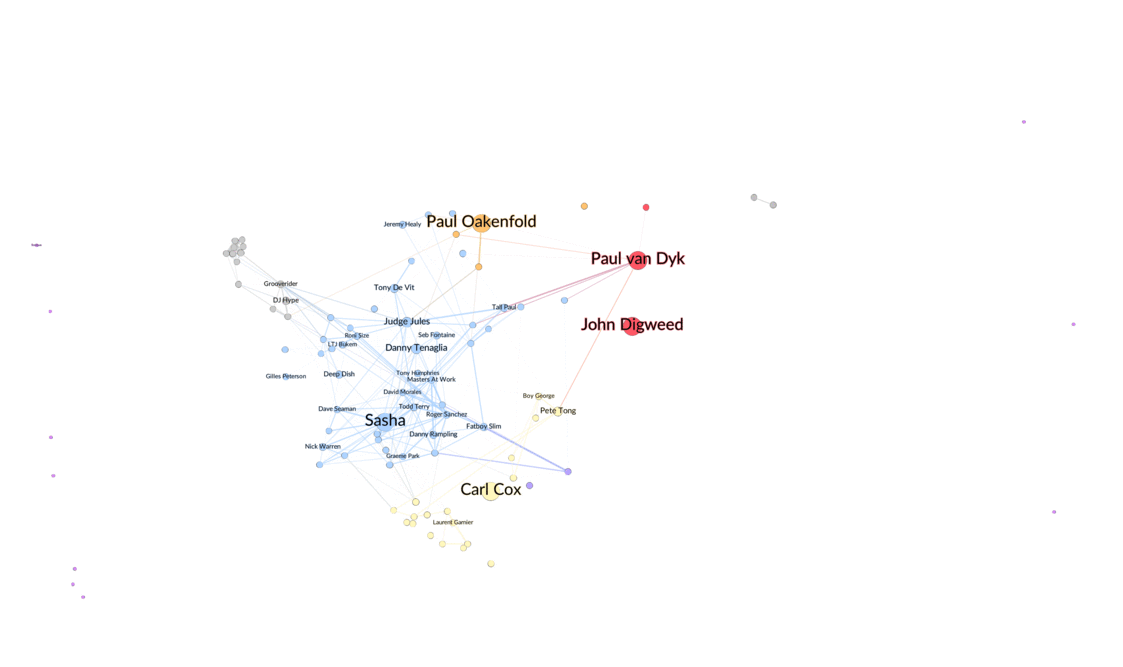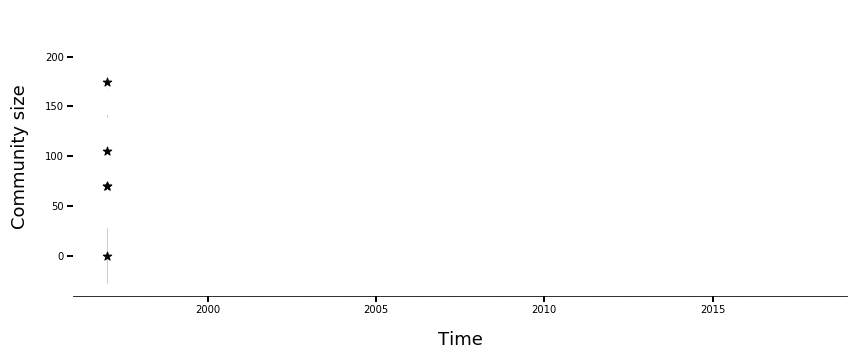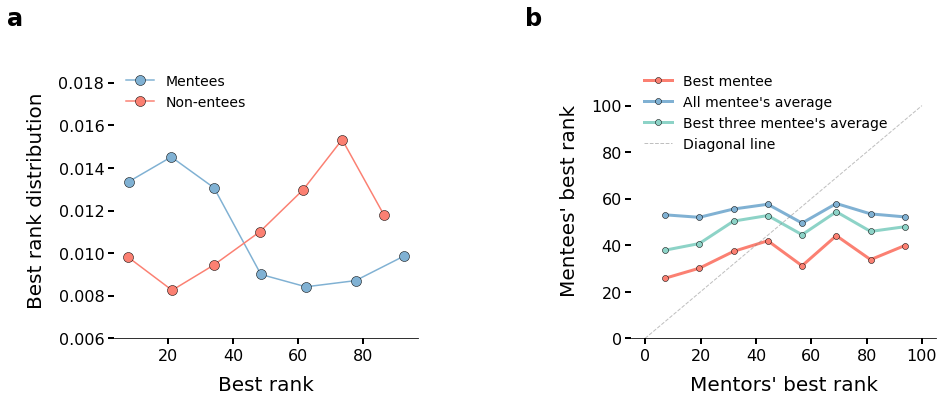In our latest work, with a preprint available on Arxiv, Elites, communities and the limited benefits of mentorship in electronic music (Milán Janosov, Federico Musciotto, Federico Battiston, Gerardo Iñiguez), we investigate various aspects of success and networking in the DJ world. For this, we build on our analysis on the annual Top 100 ranking of the DJ Magazin [1], which spans from 1997 to 2018 and contains more than five hundred highly successful DJs and producers, with 11 No. 1. DJs of the world total. In addition, we included the music discography website Discogs [2] covering more than 40k artists active on electronic music.
First, we study the dynamics of the ranking of the top 100 DJs (Figure 1), and find that there are two distinct domains within the top 100: long-standing stars who managed to break into the top 20, and those with an intrinsically more ephemeral success only touching the bottom of the ranking.
Next, we construct the co-release network of the top 100 DJs and uncover the top 20 DJs tend to be parts of separate groups. To be more precise: we extracted seven distinct communities of artists covering 92% of the top 100 DJs by using network methods. Interestingly, all these communities are centered around one or two DJs who have ever earned the No. 1. DJ of the world title, such as Armin van Buuren or Tiësto. In other words, we find direct evidence that the biggest stars build their own network. We confirm this by computing the size of each community over time, studying when each DJ arrives at the top list, and how well they succeed. We also visualize the growth of the co-release network of the top 100 (Figure 2). By further analyzing the dynamics of this network, it turns out that the different DJ communities rise, peak, and fall, one after the other, and the occurrence of new communities come with slight but diverging changes in trending genres, showing for instance, how progressive house gained popularity over techno.

Figure 2a: The temporal evolution of backbone-filtered co-release network of the Top 100 DJs between 1997-2018. Each node represents a DJ, the links between them are proportional to the number of releases they co-occurred on, and the node coloring reflects the communities we found. The nodes of the Top 20 DJs are labeled by their names, while a version of the visualization with all the names included can be found as a PDF attachment down below.

Figure 2b: The size of the different found communities over time, captured by the number of DJs being present in the top 100.
Finally, we test the hypotheses of mentorship being a major social force driving the formation of these DJ communities. We define mentorship in the following way: DJ1 is the mentor of DJ2 if they both made it to the top 100 ranking respectively at times t1 and t2 (with t1 < t2 ) and if they first appeared on the same release earlier than t2. Our findings are two-fold: on one hand, mentored DJs have much higher chances of achieving high ranks (Figure 3a), on the other hand, mentored DJs have a very slim chance of making it into the elite top 20 (Figure 2b).

Figure 3: (a) The best rank distribution of the DJs, marking by blue those who had been mentored, and by red those who had not, showing a clear advantage of the mentoring effect. (b) Showing the average best rank of the i) best ii) best three iii) all mentees mentoring top DJs have, as a function of the best rank of the mentors - the flat lines imply that the excellence of the mentors has slight effects on the mentees' expected success.
Taken together, by data analysis and network science we find that there is a long-standing elite in electronic music, which is split into temporarily separated communities. These communities typically rise, peak, and fall, as new star DJs join the scene, and when slight changes in musical genres occur. In the end, we point out that mentorship has an important role both in the formation of these communities and in boosting the success of young artists. Yet, being a mentee also decreases the chances of breaking into the hall of fame of electronic music.
Blog post by Milán Janosov
